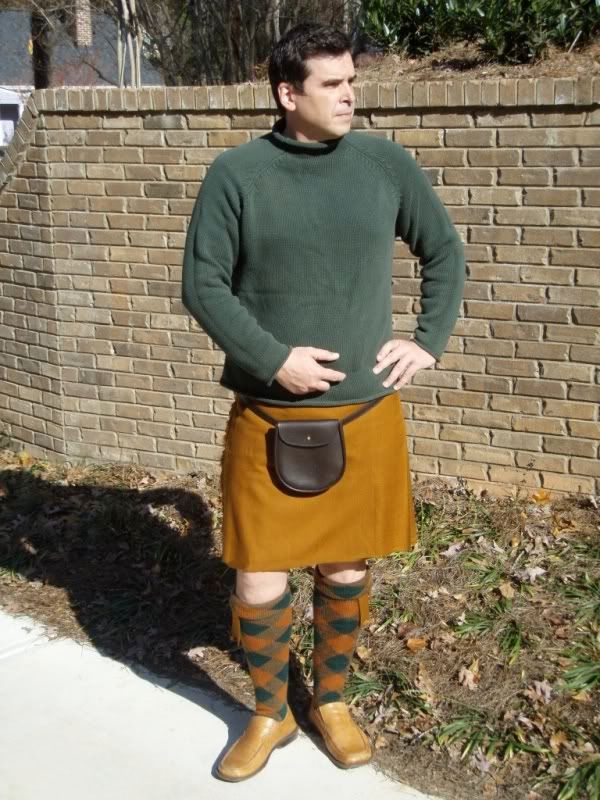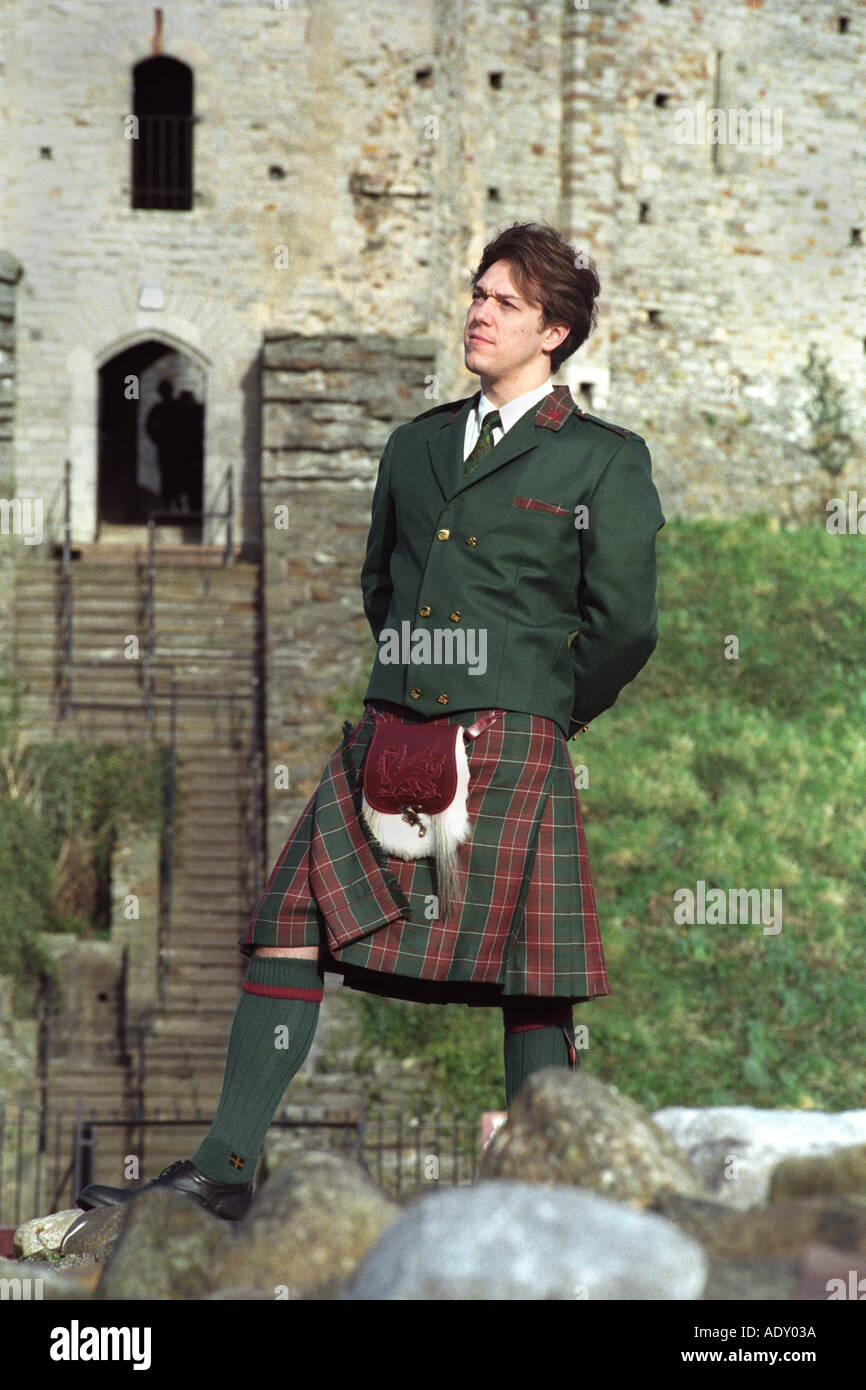|
-
"Is it possible to wear a kilt and not look like you're from Scotland?" The simple answer is yes!
To give a more specific answer, we need to look at communication. Basically, when someone does something that can transmit meaning, the effectiveness of the communication depends partly on the way it is received. There are, of course, things that can be done to increase the effectiveness of the communication, like reducing interference and introducing redundancy that re-clarifies the meaning.
So when someone wears a specific type of kilt in a particular way, this creates a sign that will be interpreted by someone else according to his/her knowledge of kilts, as well as the context. Let me give some examples.
We here at Xmarks all know that the kilt is Scotland's national dress, but not everyone knows this. There have been plenty of posts over the years from kilted Xmarkers (usually outside Scotland) being asked if they are Irish...
There are plenty of people, in fact, who may be completely ignorant about kilts. Just the other day, for example, I passed by a convenience store on my way home from an event where I was kilted. The clerk appeared to be a newcomer to Canada, and he was genuinely curious about what I was wearing. He told me he had never seen such a thing before; this fellow didn't even know what a kilt was, let alone that it comes from Scotland!
When a kilt is part of a uniform, it doesn't immediately mark the wearer as being from Scotland either, assuming the onlookers realize it is a uniform. Scottish and Irish regiments, as well as civilian pipers and Highland athletes, have spread kilt wearing throughout the Commonwealth and beyond.
If someone does know a thing or two about kilts, then they might be able to interpret the specifics of a kilt and outfit more clearly. I don't believe a utility kilt, or even a tartan kilt worn in punk style, would give the impression to most people that the wearer is from Scotland. Solid colour Irish kilts, or even tartan kilts with Irish, Welsh, or Canadian accessories don't suggest the wearer is from Scotland either, or at least not in the sense of being a current resident.
When a person wears traditional Highland civilian dress (THCD), including a clan tartan kilt, and the people around them actually know what that is, then it could suggest that the person is from Scotland. However, understanding Highland dress that way leads to another question: what does it mean to be "from" Scotland? There are complex issues here that include citizenship, nationality, diaspora, ethnicity, heritage, culture, affiliation, etc.
Have you heard the adage about the kilt being a garment worn by tourists in Scotland and Scots abroad? I wonder if my Scottish born-and-raised buddy, whose ancestors are from China, is thought to be from Scotland by people who see him wearing the kilt to ceilidhs in Glasgow?
Now for some pictures of people wearing kilts and not looking like they are from Scotland.








Last edited by CMcG; 2nd July 16 at 01:31 PM.
- Justitia et fortitudo invincibilia sunt
- An t'arm breac dearg
-
The Following 2 Users say 'Aye' to CMcG For This Useful Post:
 Posting Permissions
Posting Permissions
- You may not post new threads
- You may not post replies
- You may not post attachments
- You may not edit your posts
-
Forum Rules
|
|






















Bookmarks